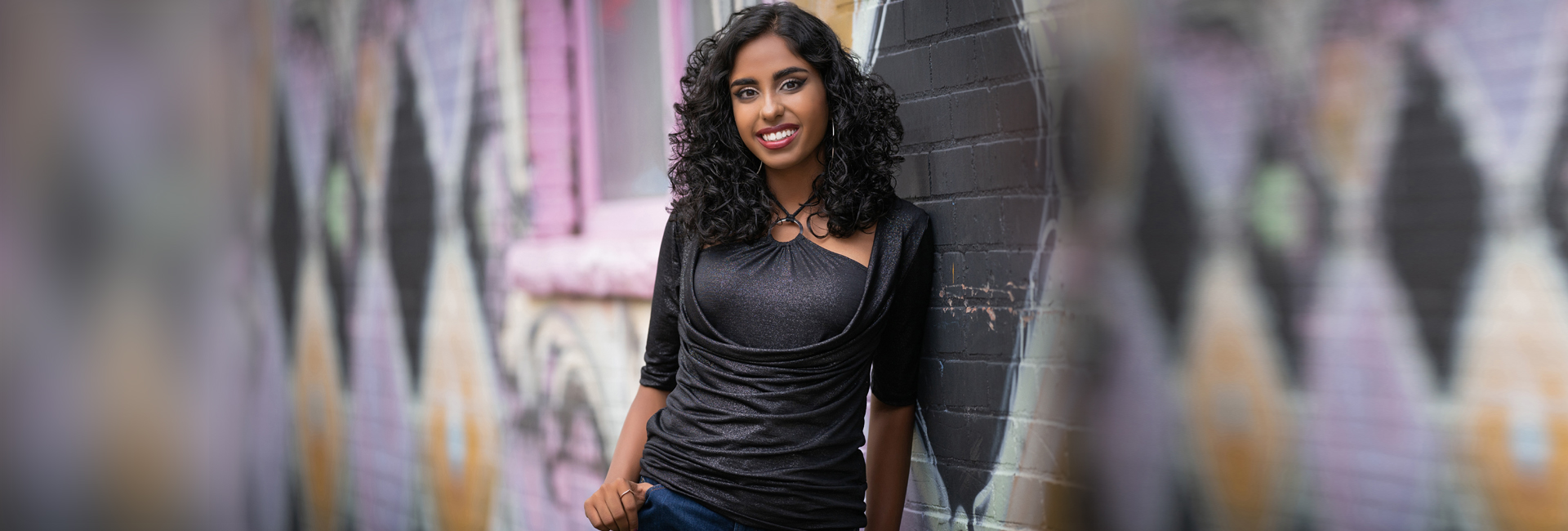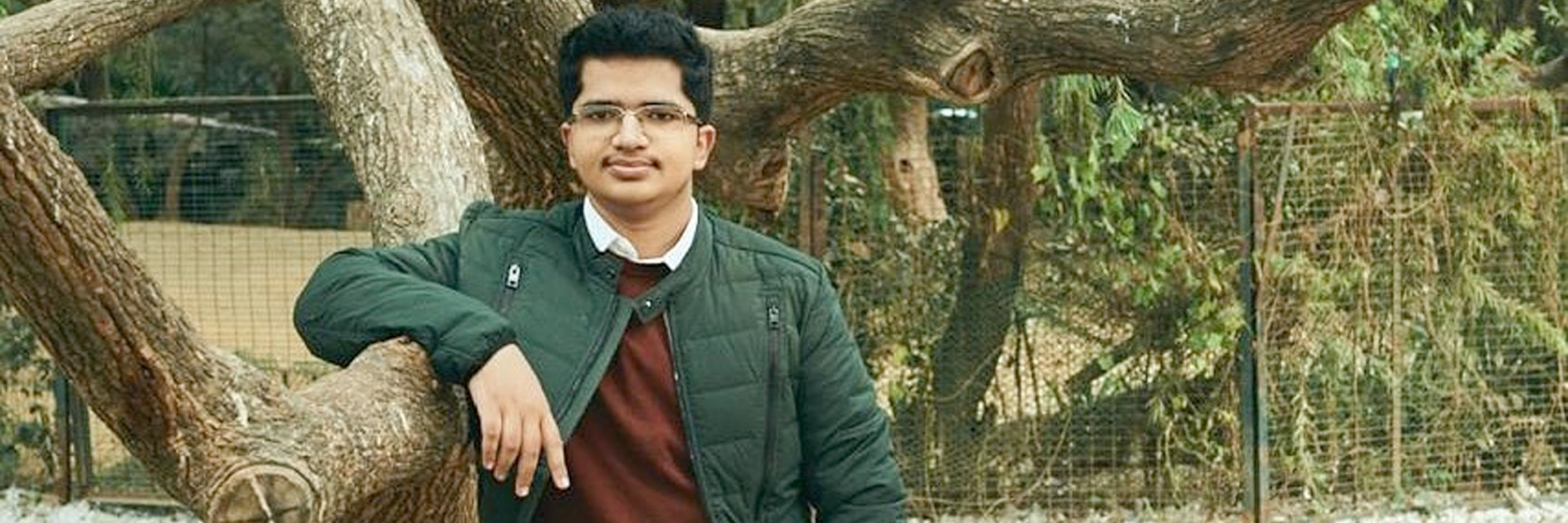(March 7, 2023) ‘Education’, they say, ‘is the base of any great nation’. However, in today’s technology-driven world, underprivileged students find it quite difficult to keep up with the rapid rate of innovation. The inability to access technology has deprived several youngsters of essential resources, impacting the quality of their education. Helping bridge this growing digital divide is sixteen-year-old Zara Xavier, who works to provide digital literacy to underprivileged students under the ‘Know More School’ campaign. Over 13,737 students have benefitted from the youngster’s initiatives thus far.
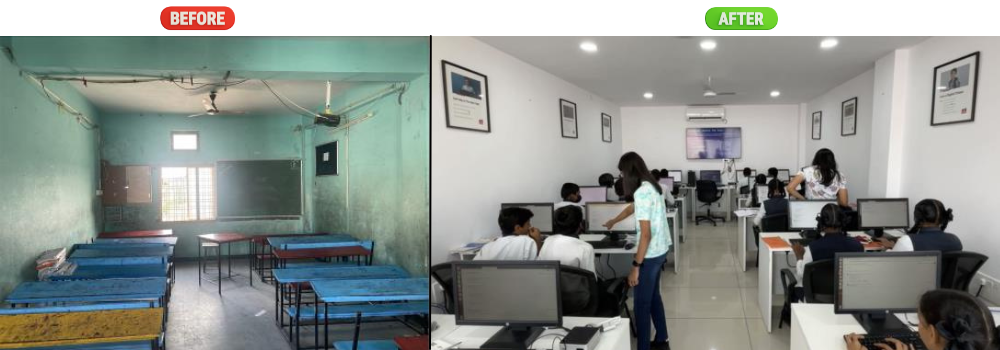
Over 13,737 students have benefitted from the ‘Know More School’ campaign thus far
“My parents started the Know More School (KMS) in 2015, an organisation under which they set up free-to-use computer labs at three underprivileged schools intending to help those students become digital citizens,” shares the young leader, as she connects with Global Indian, adding, “I joined KMS during the pandemic and started helping in making small changes to the syllabus being taught at the school already under the organisation. However, eventually, I started getting more and more interested in the work the foundation was doing. I wanted to scale up the project to create more social impact. That was when I decided to explore more schools and get them on board with us.”
The 16-year-old student of the International School Hyderabad, who is also a student ambassador in her school, recently set up a computer lab at the New Bloom High School in the city, which is not only helping the students learn the basics of digital literacy but is also providing various coding lessons to set them up for success in the future.
“I feel it is important for the kids to learn technology skills, which can help them get a good education or work opportunity in the future. In a highly tech-based world, these young children lack the basic digital skills to get by and are at a huge disadvantage. I changed a lot of the school syllabus as I found that it was outdated and wasn’t going to be useful to the student. I also wanted to make the classes more hands-on, where the students have the liberty to explore the computer programmes by themselves,” says the young leader, who regularly visits the schools, plans innovative quarterly camps, conducts meetings with the teachers, and manages the school with a full-time KMS manager. Currently, over 2500 students from grades I to X attend three classes per week in each KMS lab, amounting to 12 classes per month and 636 per year.
Leading the way
Zara recalls the experience of identifying an underprivileged school for the organisation. “I remember when I first visited the school, I was just looking around and noticed that all the kids there were quite friendly. I really like the energy of the school,” she says. “There are about 600 students at the New Bloom High School, so it is smaller than the other schools that we have under the Know More School campaign. But what really motivated me to pick this school was the excitement of the students here to learn and the fact that they were hard-working. Once we finalised the school, we went ahead with designing the lab, getting the computers, and then finding a teacher who would not only teach, but also encourage the kids to explore and learn on their own.”
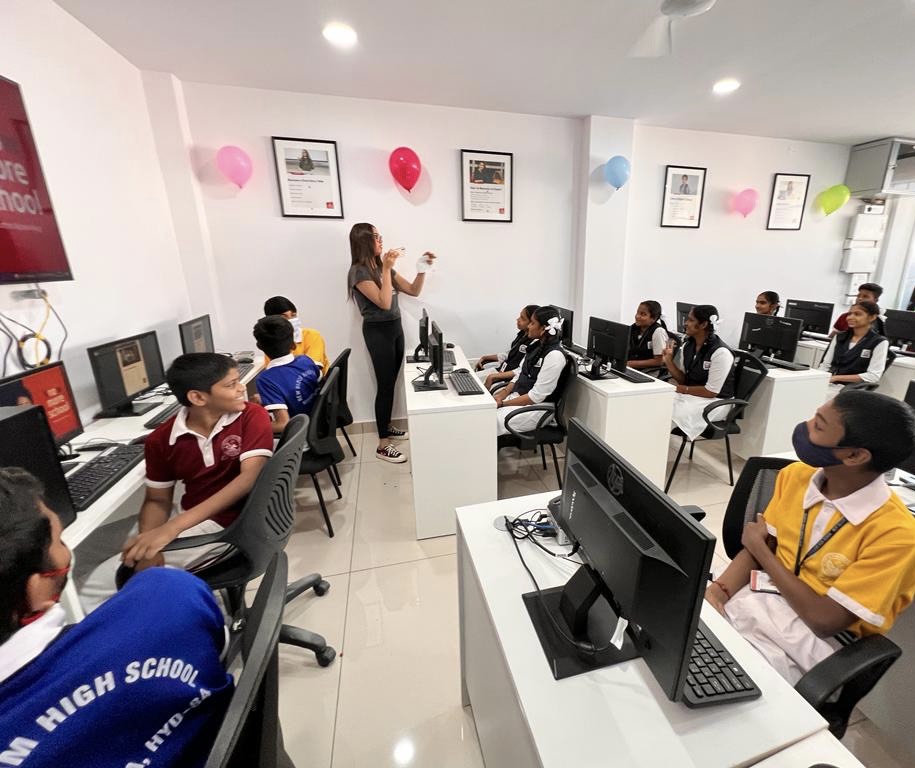

Zara with student at the New Bloom High School
Through this young leader’s initiative, thousands of underprivileged students now have access to various online classes being conducted across the globe, and they can also access resources available on the net for any educational research, instead of relying only on their textbooks. Students are also taught computer basics including Microsoft Office (Word, PowerPoint, Excel), editing documents, making posters, videos and podcasts, and the fundamentals of developing a website. The new syllabus designed by Zara provides students access to platforms like Khan Academy, BBC Bitesize, Google Colab, and Canva which help the students broaden their horizons.
Despite being busy with her own schoolwork, Zara makes sure to physically visit the school every 10 days. “One of the things that bothered me when we started the new computer lab was if it was making the impact we intended for. And the only way to find that out was to go and visit these labs once every week. While other volunteers do a tremendous job at ensuring the kids learn something new every time, I like to be there as often as I can to ensure that everything is running smoothly. Even if I am very busy, I still find time to make sure and visit the labs and hang out with the kids there,” the young leader says.
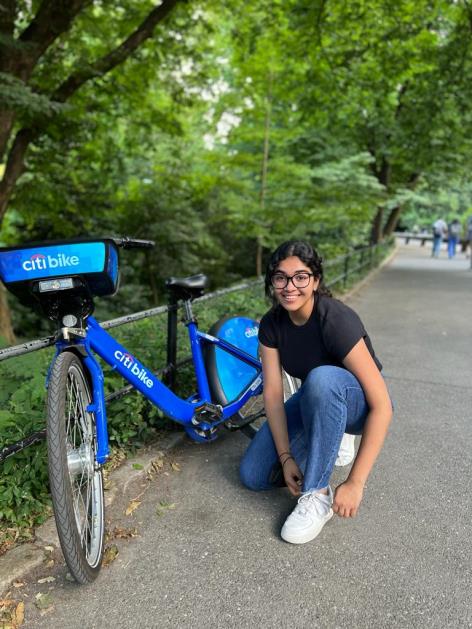

Zara has been involved in various volunteering activities since she was a young child. Motivated by her parents, Sabina and Xavier Augustin – who are engaged in numerous non-profit projects – the young leader feels that being able to help other people is also a privilege. “My parents have taught me to be grateful for all we have in our lives, and that we have to make efforts to give back to the community. So, I have been involved in various volunteering activities since I was young, including raising funds for the Heal-a-Child Foundation, which helps save the lives of sick children from very poor families,” she says. In 2021, Zara joined the “Angels of Heal-a-Child’ programme and raised funds from friends and family to pay for the treatment of poor and critically ill newborns.
View this post on Instagram
But it is not just her parents that this young leader is inspired by. “Many of my friends are also volunteering or running campaigns for various causes, and that inspires me a lot. As a generation, we are aware of the various issues plaguing our society and are ready to take things into our own hands and explore various solutions to help society at large,” shares the young leader, who also raised funds to provide over 1000 PPE kits for front-line medical workers at high risk during the first and second COVID waves in the country.
The road ahead
Passionate to give all the students an equal education platform, the young leader is also planning on including more schools under KMS. In fact, only last month, Zara and two of her friends – Bhavani and Manya – organised a week-long coding camp for around 20 kids, who were taught the basics of Python.
“We recently started organising coding camps for the kids at our school to help them learn various coding languages and platforms, which is a skill so much in demand these days. Next, we are working on establishing libraries at the schools to ensure that the kids can access various educational resources free of cost. I also pick up ideas from various places during my travels. I remember seeing 3D printed eco-schools in Dubai during my visit there, and would really like to do something like that with KMS,” says Zara, who is also the editor-in-chief of her school newspaper, and recently attended the summer programme at the New York Times.
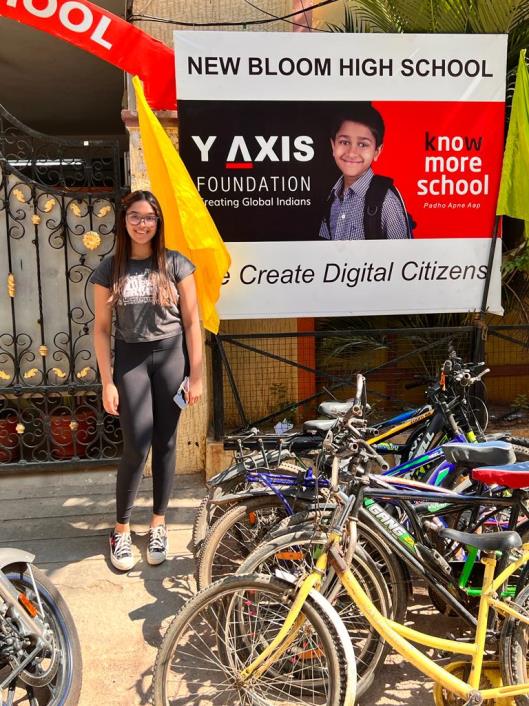

The new syllabus designed by Zara provides students access to platforms like Khan Academy, BBC Bitesize, Google Colab, and Canva
Always driven, Zara – who is currently working on organising the first ISH TEDx at the Hyderabad-based T-Hub – plans on starting her own business after finishing her education. “I am going to graduate from school next year, and after that, I want to go to study eco or business management,” she says.
While she wants to start a profitable organisation, this young leader is quite conscious about creating a positive impact through all her initiatives. “Once I graduate, I plan on coming back to India and setting up a social enterprise. One area of entrepreneurship in which I am very interested is edtech. I would really like to explore ways to make education and various learning resources available and accessible to all. As much as I would like to make a profit and monetise an idea, I would still want to help those who are in need,” shares Zara.


